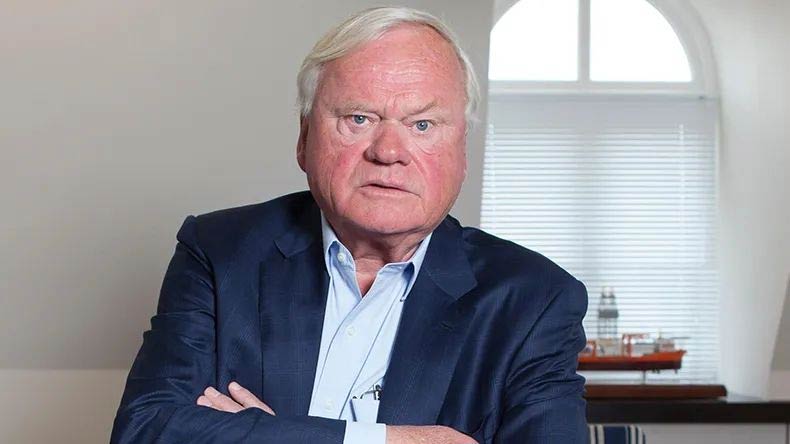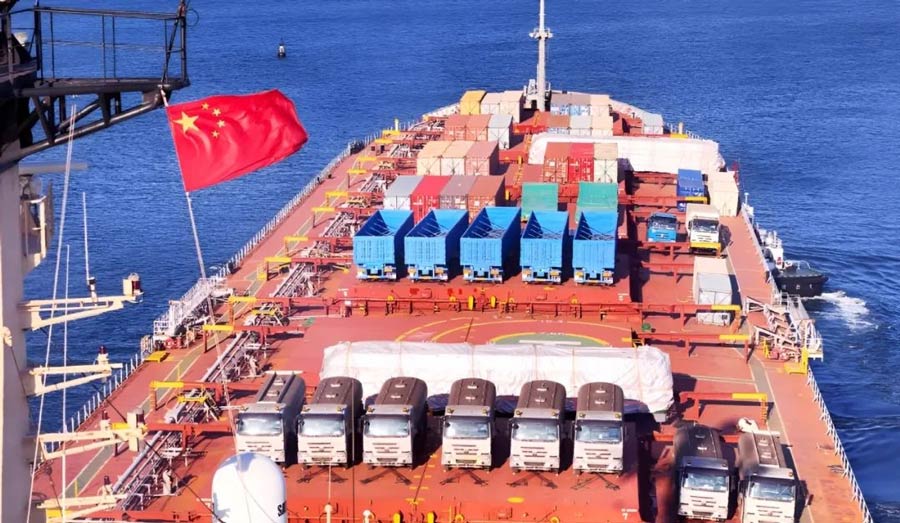

Norwegian King sold four Chinese bulk carriers last month
Seatankers Management, the shipping company owned by Norwegian shipping magnate John Fredriksen, recently reported the sale of two more bulk carriers, bringing the total number of ships that have changed hands in the past month to four.
According to European shipbrokers, Seatankers has sold a Kamsarmax bulk carrier of 81,000 dead tons, Sea Pluto, built in 2013, for about $17 million, and another vessel of the same size, Sea Venus, is said to have changed hands for a similar price.
It is worth noting that all four ships were built by Chinese shipyards. In the recent ship trading market, ship brokers have observed a trend: Japanese-built ships are generally at a significant premium to Chinese-built ships. A Japanese Kamsarmax built in 2011 recently sold for more than $17 million, an attractive price given its age; A similarly sized Japanese ship built in 2014 sold for more than $20 million in February.
Greek shipbroking firm WeberSeas points out that Chinese-built Kamsarmax ships are currently trading at a discount of about 20% compared to similar Japanese ships. Market participants believe that this spread is partly due to the uncertainty about the port fee policy that will be introduced in the United States, making the market take a wait-and-see attitude.
An industry source said that Fredriksen's series of ship sales may also be related to the expected policy of the United States to levy port surcharges on Chinese shipbuilding, with a certain "asset hedging" color. Although the U.S. policy of imposing "port fees only on Chinese shipbuilding" has not been formally introduced, "the wind has been tight." Once the policy is implemented, it will likely affect the operating costs of Chinese-made ships in the US port. Fredriksen has a reputation for taking stock of the situation and adjusting its asset structure flexibly. The rhythm and object of the sale of the ship are highly strategic, perhaps it is by the current window period that there is still a buyer to take over, to make a risk hedge in advance.
Back at Seatankers itself, there has been much speculation about whether Fredriksen wants to exit the dry bulk market since he sold his stake in US-listed bulk carrier Golden Ocean. However, he then re-emerged on the public markets by taking a stake of about 10 per cent in Greek Bulk giant Star Bulk Carriers.
"It is difficult to predict the next strategy of the company, which has a reputation for being quick and flexible," commented one market player. "But one thing is for sure, it never turns down a good opportunity."
It is worth mentioning that while continuing to sell existing assets, Seatankers is currently working on a shipbuilding program in China, involving new orders for six Newcastlemax and four Kamsarmax bulk carriers.
According to European shipbrokers, Seatankers has sold a Kamsarmax bulk carrier of 81,000 dead tons, Sea Pluto, built in 2013, for about $17 million, and another vessel of the same size, Sea Venus, is said to have changed hands for a similar price.

It is worth noting that all four ships were built by Chinese shipyards. In the recent ship trading market, ship brokers have observed a trend: Japanese-built ships are generally at a significant premium to Chinese-built ships. A Japanese Kamsarmax built in 2011 recently sold for more than $17 million, an attractive price given its age; A similarly sized Japanese ship built in 2014 sold for more than $20 million in February.
Greek shipbroking firm WeberSeas points out that Chinese-built Kamsarmax ships are currently trading at a discount of about 20% compared to similar Japanese ships. Market participants believe that this spread is partly due to the uncertainty about the port fee policy that will be introduced in the United States, making the market take a wait-and-see attitude.
An industry source said that Fredriksen's series of ship sales may also be related to the expected policy of the United States to levy port surcharges on Chinese shipbuilding, with a certain "asset hedging" color. Although the U.S. policy of imposing "port fees only on Chinese shipbuilding" has not been formally introduced, "the wind has been tight." Once the policy is implemented, it will likely affect the operating costs of Chinese-made ships in the US port. Fredriksen has a reputation for taking stock of the situation and adjusting its asset structure flexibly. The rhythm and object of the sale of the ship are highly strategic, perhaps it is by the current window period that there is still a buyer to take over, to make a risk hedge in advance.
Back at Seatankers itself, there has been much speculation about whether Fredriksen wants to exit the dry bulk market since he sold his stake in US-listed bulk carrier Golden Ocean. However, he then re-emerged on the public markets by taking a stake of about 10 per cent in Greek Bulk giant Star Bulk Carriers.

"It is difficult to predict the next strategy of the company, which has a reputation for being quick and flexible," commented one market player. "But one thing is for sure, it never turns down a good opportunity."
It is worth mentioning that while continuing to sell existing assets, Seatankers is currently working on a shipbuilding program in China, involving new orders for six Newcastlemax and four Kamsarmax bulk carriers.





